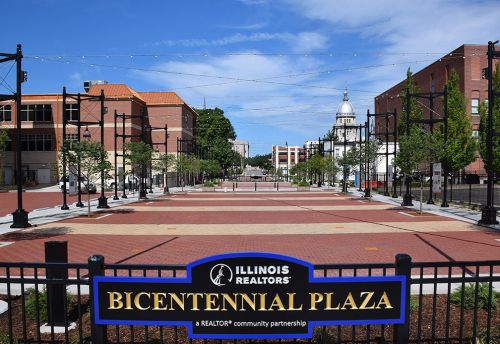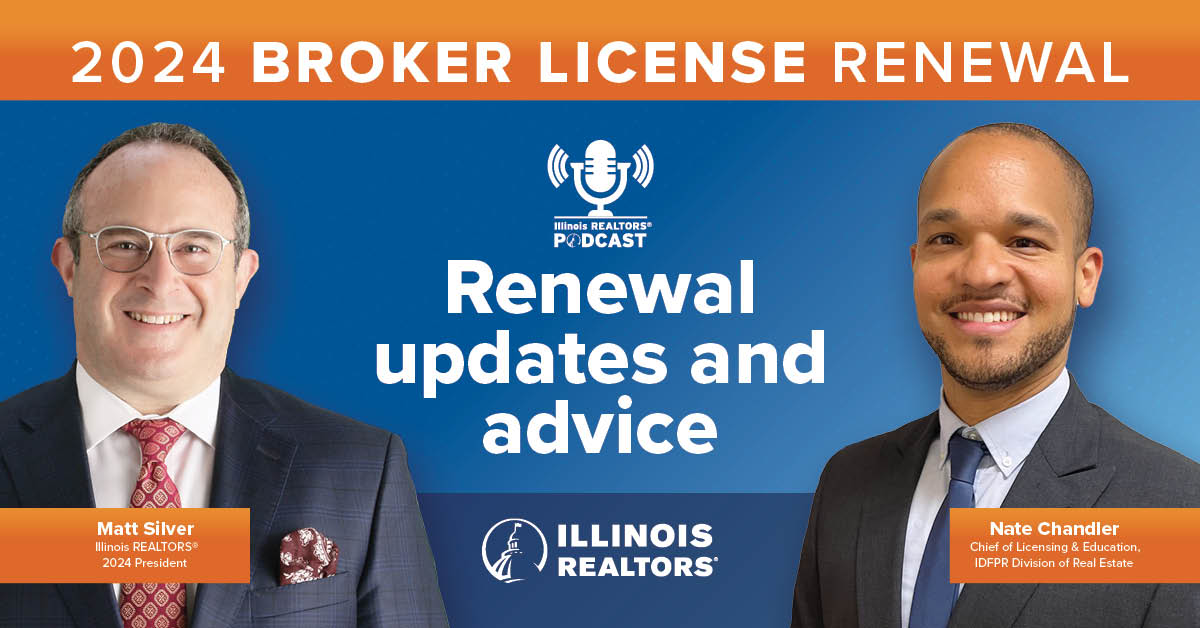Consumers are being whiplashed by conflicting economic signals, and that uncertainty is likely to be reflected in the Illinois housing market in 2020, a noted economist tells the Illinois REALTORS® Podcast.
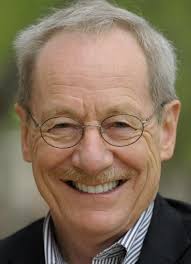
Hewings
Dr. Geoffrey Hewings, director emeritus at the Regional Economic Applications Laboratory at the University of Illinois, Champaign, sat down for an interview on a wide array of topics, ranging from the impact of foreclosures on real estate, the political climate and housing affordability in Illinois.
Hewings has analyzed data collected by Illinois REALTORS® from member Multiple Listing Services for many years.
For consumers, 2020 could look a lot like 2019, a year marked by slower sales, higher median prices and a lack of inventory, he said.
“Clearly, uncertainty in the market, in the economy, is going to weigh very, very heavily on a decision to buy, a decision to sell, a decision to upgrade,” Hewings said.
Hewings’ forecast for the state: Sales are likely to be down slightly statewide, although median prices will continue to show some modest gains in the new year.
More “muted” market predicted for sales
Hewings said sales may be stronger in the Chicago area, but other parts of the state could struggle to see positive sales numbers. His forecast calls for some increases statewide on a month-to-month basis, but annual sales will show decreases.
A bright spot: Median prices will continue to show gains, reflecting a trendline that has been prominent over the last few years.
“From a price perspective, I think we’re going to see continuing, but modest, increases,” Hewings said.
The podcast and the transcript are below. And, if you want to learn more, read Hewings annual report looking at 2020.
Full transcript
Jon Broadbooks: Welcome to the Illinois REALTORS® podcast. I’m Jon Broadbooks with Illinois REALTORS®.
From the standpoint of the real estate industry, 2019 wasn’t great, but it really wasn’t all that bad, either, in many parts of the state. This year, we saw overall median prices increase, while sales decreased just a bit. At the same time, there were continued headwinds, ranging from a lack of inventory, particularly in some areas of the market, to the ongoing regulatory and tax environment that many say stifles the economy. All this begs the question: What’s 2020 going to look like?
Here to talk about it today is Dr. Geoffrey Hewings, Director Emeritus with the Regional Economic Applications Laboratory at the University of Illinois in Champaign. Geoff has helped Illinois realtors track the ups and downs of the housing market for more than two decades, and he’s known for his presentations each January at the association’s public policy meetings.
Geoff, thanks so much for being on the podcast.
Geoffrey Hewings: My pleasure, Jon.
Jon Broadbooks: I want to spend most of this segment on the future. But, from my standpoint, the data seemed to be all over the place when it came to sales. One month, we’d be up, the next month we’d be down. Why did we see these wild, month to month sales swings in 2019?
Geoffrey Hewings: I think that part of it is the incredible uncertainty in this economy. I think if we track what has been going on in the stock market, we see the same sort of behavior, where we’ll have several weeks where movement seems to be positive and continuing, and then suddenly, some economic news comes out that is not viewed very favorably, and down we go.
The second component is, we track a couple of consumer sentiment indices. I would say, 10 out of every 12 months in the last couple of years, they have been pointing in opposite directions. In some cases, consumers are very optimistic about the short run. In other cases, they are very pessimistic about the short run, although much more optimistic about the long run. The next month, the reverse is the case.
All of this, I think, preys very heavily on the uncertainty in the housing market because, clearly, for almost everybody, a housing decision is one of the largest financial decisions they’re going to make. Clearly, uncertainty in the market, in the economy, is going to weight very, very heavily on a decision to buy, a decision to sell, a decision to upgrade. Complimenting that, and we can talk about this a little bit more later, in Illinois, one of the most important decisions is whether we’re going to buy locally, or whether we’re going to buy somewhere else and buy a house there.
Jon Broadbooks: Sales-wise, should we expect more of the same in the year ahead?
Geoffrey Hewings: Yes, I think so. I think it’s going to be very much a more muted market, at least for the first part of the year. I think the political, national political situation is going to play an important role in conditioning consumer sentiment. Most of the forecasts are for a very strong holiday season, in terms of consumer sales, but I think once we enter the new year, I think people are going to probably cut back. I think they will probably defer a lot of purchase. Part of that deferment will probably be reluctance to enter the housing market in the great numbers.
I think that, as I look at what a number of the national models are forecasting, I think that’s pretty much on track. I think what we’re going to see here, locally, is going to reflect the general trends nationally. What’ll happen is, we will see, as we enter into the spring, the month to month sales will go up, but year over year sales, I think, are likely to be, in most cases, very close to no change year over year, or trending slightly negative.
Jon Broadbooks: Sales may have been up and down, but median prices provided, pretty much, steady increases through the year. Do you see median prices continuing to increase? If so, by how much?
Geoffrey Hewings: I think they’re going to continue to increase. I think this has been one of the anomalies of the housing market. That, when you see sales behaving the way they are, you would suspect some concomitant change in prices. But, prices have been trending upwards, now, for several years. Not alarmingly, but that’s, I think, very good news.
I think it reflects a couple of things. One is that the inventory is low, so that when people are interested in buying a house, they’re finding that bargains are not there to be had, where you might have expected that were to be the case. So, I think we’re going to see increases. By the end of 2020, we’re going to expect a median price of around $207,000 in Illinois, and $243,000 in Chicago.
From a sales perspective, it’s uncertain. From a price perspective, I think we’re going to see continuing, but modest, increases.
Jon Broadbooks: Geoff, in your 2020 Housing Report, you predict that home sales will increase in many months in Chicago, but decrease in areas outside of the Chicago market. Is this upstate downstate divide widening, or is this just a continuation of what we saw in 2019?
Geoffrey Hewings: Well, it is, except in the post-recession recovery period, when manufacturing was one of the leading growth centers in the economy. We saw a lot of places in downstate, like Peoria, Rockford, the Quad Cities, doing very, very well, because they were being very much propelled by uptick in the manufacturing sector. The uncertainty, nationally and internationally, has really begun to bite on the Illinois economy. We’re very much aware of what has happened with the farming sector, the uncertainty around the tariffs negotiations. I guess, that’s a polite way for it to be referenced, with China, are really having a huge negative impact downstate.
It’s not … People say, oh, farming is such a small component, but there a lot of communities downstate that directly and indirectly are very, very dependent upon the farming sector. I think this is going to continue, probably well into the new year. The latest information that we have suggests that it’s very unlikely, this year, that there will be any agreement with China, which means that uncertainly, what’ll happen to the crops and so forth, is going to continue.
At the same time, outside of the farming sector, the global economy is, basically, very much in a slowdown, as a result of the U.S. China tariff war. The fact that Europe, at the moment, is in turmoil. The German economy is, technically, entering recession, at least for the manufacturing sector. Today, we have the election in the United Kingdom, about whether the UK is going to have a government which will accelerate the exit from the European Union. All of this is presenting enormous uncertainty. So, as a result, investment in manufacturing is declining, production has really declined very much. It’s still positive, but month over month, year over year, it is declining. All of this is leading to a very negative influence on the Illinois economy.
Even though, directly, we are not as dependent as other parts in the US on international exports, indirectly, we are part of supply chains that end up in products that are internationally exported, so that we are now receiving some of those negative effects of slow downs in Ohio, Wisconsin, and Michigan, on the Illinois economy’s manufacturing sector.
Jon Broadbooks: We’ve talked for a number of years about the economic challenges that Illinois faces, and you just outlined a number of them. Not the least of these is that Illinois continues to lose population. This constant loss of population, at some point, seems to have to be reflected in the housing numbers. Are we seeing that in the data you review?
Geoffrey Hewings: Yes, we are. The growth rates we’re looking at here are much more muted than other parts of the economy. I think the issue that we have to understand is that migration has been a common phenomenon in the US. 10 or 15 years ago, we would talk about one in four households moving every year. This did not necessarily mean moving from one state to another, in some cases it was from one part of a community to another, or from one community in one city, to another community within that same city.
We’ve seen a trend, in the last decades, that has resulted in significant net out-migration, particularly of some of the most active parts of the population. By that I mean, people who are, say, 25 to 45. This is not unusual for us to see people in and out, but right now, we’re seeing more people moving out than coming in, particularly in those age groups. Those are the people that, as far as the housing market goes, are the prime candidates, first time buyers, or people who have bought a house, end up starting a family, and then are looking to upgrade. So, that energy that migration has provided us within the past, in terms of the housing market, has been dissipated somewhat. It’s not disappeared, but the levels of activity that’s generated by those segments of the population are no longer as large as they were some years ago.
I think that part of the problem is centered on a couple things. One is, I think, the business community now has enormous flexibility about where they can locate. People say, oh yes, but we have O’Hare. But, O’Hare does not have a ring fence around it. People, firms, in Wisconsin, and Northwest Indiana can access it, just as easily as folks in Chicago. When we look at our fiscal challenges, now with unfunded pensions in excess of $130 billion, the problems of our current account defects, all of these things, I think, are generating enormous uncertainty on the part of businesses that are already here, or businesses that might otherwise have thought about locating in Illinois, think twice.
In fact, some work that one of my PhD students did for is doctoral dissertation had shown that the 2011 tax increase really did have, I’d say, a positive impact on net migration, but for Illinois, a negative impact. In other words, more people left than coming in, much more so than had been the case in the previous decades.
I think there are two concerns here. One is, as a result of this, property taxes are now very, very high, and are seen by many people from outside the state as a negative, and for people inside the state are often, one can generalize from letters to the Chicago Tribune, a source for moving from Illinois to some other part of the country. This is, I think, a real concern for the housing market. Even though we now have a budget, and we have an accelerated capital investment program, a lot of the funding for that is very much dependent on Governor Prtizker’s proposal for a graduated income tax, because that has to be voted on by the electorate in the coming year.
I think that the one concern that I have always had about Illinois is that, any time they raise taxes, it’s often not very clear what’s going to happen to that money. I think, unless the Governor compliments this proposal with a very, very carefully orchestrated plan as to how the additional revenue is going to be allocated, I think businesses are going to continue to be very suspicious that I’ll just be business as usual in Illinois. The additional monies will go into a big pot, and they will be undifferentiated. The deficits, whether they’re going to be addressed or not, that’s still not clear.
I think all this uncertainty, I think, is going to be something that, if we do not address, I think it’s going to have a very negative impact on the housing market. Not just next year, but then the next two or three years.
Jon Broadbooks: Probably the one question everybody is asking is, do we see any recessionary clouds on the horizon? Will we have a recession? If so, is there each time frame we could talk about?
Geoffrey Hewings: Well, if you’re asking me one week, I’m going to give you one answer, but next week another one. I think part of that is that it’s very, very hard to really get a long term vision about what’s going to happen, particularly in Washington. I think that the uncertainty I was alluding to about what’s happening in Illinois is now happening at the national level. We have a couple of weeks where the market was all excited, negotiations had started with China, and then, bang. Something happens, and we’re right back, the market goes down again, uncertainty continues.
I think the general evidence from the tax cut is that it has not had the impact that, I think, the proponents claim. That is, a lot of businesses are sitting on money, they’re not making investments. To some extent, I don’t blame them. Given the uncertainty, would you really want to commit to a huge investment in machinery, to increase your employment, without the expectation that you’re going to be able to sell the goods and services? Increasingly, those sales are outside the country. If the international context is uncertain, then that is going to have some clear impact.
Most of the folks seem to feel that if we’re going to have a recession, we might have been seeing some early signals now. The Fed kept rates the same, at this time they didn’t see a need for further stimulation. I think there’s a feeling is, we will probably … I hate to use the word leap the line, because that’s pejorative, but I think probably continue with this uncertainty. It’s not clear that there are very strong signals that we’re likely to enter a recession.
Jon Broadbooks: We’re talking with Dr. Geoff Hewings, Director Emerita for the Regional Economic Applications Laboratory, at the University of Illinois Champaign. He’s been talking about the challenges for the housing market in the year ahead.
Geoff, inventories continue to be depressed, although they did see an increase on an annual basis for just a few months in 2019. Are we ever going to see inventories meaningfully start heading north, see a meaningful build back of this inventory?
Geoffrey Hewings: Yeah, except for one area. Which, when we’re looking at the data in the last month, and have noticed that the foreclosure inventory that had declined until a couple of years ago, has started to build up again. The person who does the work for us is actually looking at this, this month, to try to understand, why is this happening?
As we know, in Illinois, we have a court-mandated system. As a result of this, a house that was planned for foreclosure might take as much as six years before that property goes through the various processes, and then enters the market. There’s been quite some work … In fact, in the last month, I’ve had two papers from academic journalists to review, who’ve been looking at the role of REOs on housing prices. There’s a lot of empirical evidence that is having a muted effect.
At the same time, we’re seeing this inventory rising. So, in many months … I would say, probably, in 14, 15, or 16, the median prices increase, mainly because foreclosed property sales prices increased more than regular sales. As a result, that has an impact. The question now is, as we move into 2020, what is going to be the impact of this increasing foreclosure inventory on the total inventory? Are people going to look very pejoratively on foreclosed properties? Of course, a lot of it depends on the condition that they’re in, and so on and so forth.
What we’ve seen is that the gap between foreclosed prices and regular prices has been narrowing. In other words, foreclosed prices have been going up much more rapidly than regular prices. So, if the inventory in foreclosed prices is increasing, is that going to somehow contravene to the overall inventory? I think, still a lot of people don’t want to look at foreclosed properties. They want either new properties, or they want something which they don’t regard as contaminated. That’s something we want to look at.
Overall, I think the inventory is not going to be changing very, very much. We’re not seeing a huge uptick in housing construction. We are seeing an uptick in the construction of rental units, particularly in Chicago. I think we can’t look at much in the way of a change for inventory in 2020.
Jon Broadbooks: Affordability is an ongoing problem in Illinois, and really, it’s not just Illinois, it’s nationwide. Do you see affordability getting any better? If so, do policies such as boosting transfer taxes, or implementing rent control, help or hurt the state, and the state’s homeowners?
Geoffrey Hewings: Well, there’s no one fix. I think a lot of people, they look at a place like New York and San Francisco, and say, oh, we need rent control. Rent control is a very, very complex issue. I’m not sure it’s really going to solve the problem. We have a problem, in the sense, if prices continue to increase, and while we’ve seen median wages increase, if you look at the distribution of those wages at the lower end, they have been stagnating. The bottom quintile, and the one above that. So, the bottom 20% of wage earners, have really not experienced much in the way of wage increases. Those are the people who are looking at houses in the $80,000 to $200,000 range. The inventory there is very, very low. That’s the first thing.
Secondly, for many of those folks, that’s still beyond their affordability. As a result, we’re seeing housing affordability now, I think, has gotten worse in the last year, as a result of this. I think when people just look at averages or median prices, they don’t take into account all this variation. At the upper end of the spectrum, obviously it’s not a major issue. It’s really the $200,000 house and below that, I think, is where the inventory problem is important. Even there, again, we’re seeing those median prices in that range increasingly rapidly. Again, making it impossible for people in those lower two quintile to really even contemplate buying a house.
Jon Broadbooks: A recent article in USA Today noted that Baby Boomers were “aging in place,” and consequently, were tying up a lot of real estate in the market. How does this effect a state such as Illinois, which has an older population, relative to many other states?
Geoffrey Hewings: I think you have to look at it from two perspectives.
One, if I retired, and move to Florida, I make my house available, which might be good news for the housing market because I’m increasing inventory. But, what I’m doing is I’m taking my pension, my 401K income, and I’m spending it somewhere else. I’m not spending it in Illinois. The problem that a lot of people don’t realize is that 2030, 20% of our population is going to be over 65. They have enormous discretionary income. Secondly, they spend a lot of money on goods and services provided locally. Their multiplier, or ripple effect, is very, very, high. They spend a lot of money on healthcare, and that healthcare is provided locally.
From that perspective, yes, they’re staying in their house. On the other hand, they are contributing significantly to the economy, and it’s 20% of the economy by 2030. I don’t think we should be too quick to say, let us try to encourage them to leave. I mean, the way to do that is to increase property taxes, or increase the state income tax, and so on and so forth, and that will accelerate it. We might have more houses for sale, but whose going to buy them? That’s the issue. We’re not getting that energy coming in from the 25 to 45 growths.
Jon Broadbooks: We’ve covered a lot a ground. Are there any bright spots in all this data?
Geoffrey Hewings: Yes, I do. I see, I think, an increasing recognition that the problems facing Illinois are not going away. I really commend the Tribune for continuing to have this drumbeat. I think either today or yesterday, they had another editorial about the out-migration issue.
I think one of the problems is that we’ve not had organizations, both public sector organizations, community organizations, business organizations, who put enough pressure on the government to have some consistent, longterm strategy. We know we have to address this.
I’m just hopeful that, perhaps in the next year, once the national picture becomes a little clearer, that groups of people can sit down and really begin to think in terms of a strategic plan for the state. I think there’s a lot of willingness to do that, but what I hope is we can have some leadership that’s coming. I commend your organization, for the fact that I think they have been very helpful, in trying to promote some of these issues, and get policy makers, and politicians not to put their heads in the sand, and hope that they will go away. They’re not going to go away. There are a lot of academics who are very excited to offer help. It would very nice if we could get all of those folks together, and being to address this issue.
I think too much of Illinois’ strategy has been year to year, and there are a lot of issues that are going to require us to take an attitude, maybe it’s going to take us 20 years. You know something? If I’m a [inaudible 00:25:34] person, and I see that the state is going to do this, I’m going to be much more willing to come in and hear. What I don’t want to do is come here, and then suddenly have a Governor, like Petrovich announce, “Oh, we’re going to have a new tax that’s going to reduce your profits by about 15 or 20 percent.” That’s not the environment that requires [inaudible 00:25:56]. Let’s hope that we’ve got some people now, who are understanding that we have some challenges, we’re going to have to face them, and it’s going to be some difficulties. We just cannot go on as before.
Jon Broadbooks: We’ve been talking with Dr. Geoff Hewings. If you’re interested in learning more about the association, Illinois Realtors Collects, or obtaining a copy of Dr. Hewings annual forecast for the Illinois Housing Market, and what it might look like in 2020, you can get that and all sorts of information at IllinoisRealtors.org/MarketStats.
Geoff, thanks so much for being on the podcast, and Happy New Year.
Geoffrey Hewings: Happy New Year to you. Let’s hope it’s a really happy new year.




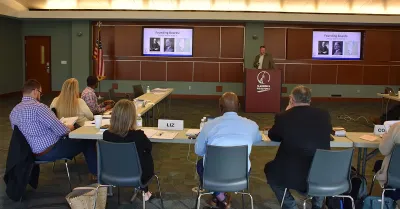 Create professional development programs that help REALTORS® strengthen their businesses.
Create professional development programs that help REALTORS® strengthen their businesses.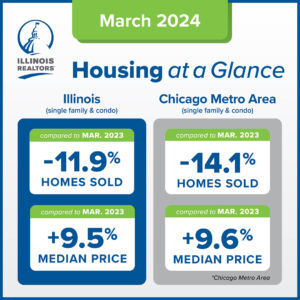
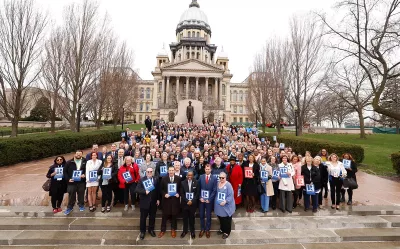 Protect private property rights and promote the value of REALTORS®.
Protect private property rights and promote the value of REALTORS®.
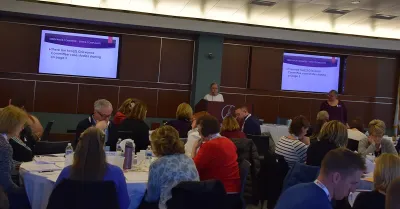 Advance ethics enforcement programs that increase REALTOR® professionalism.
Advance ethics enforcement programs that increase REALTOR® professionalism.
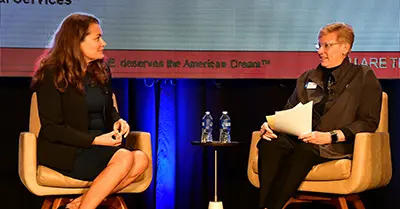 Protect REALTORS® by providing legal guidance and education.
Protect REALTORS® by providing legal guidance and education.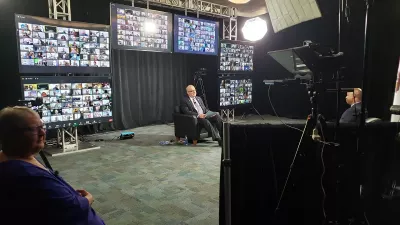 Stay current on industry issues with daily news from Illinois REALTORS®, network with other professionals, attend a seminar, and keep up with industry trends through events throughout the year.
Stay current on industry issues with daily news from Illinois REALTORS®, network with other professionals, attend a seminar, and keep up with industry trends through events throughout the year.